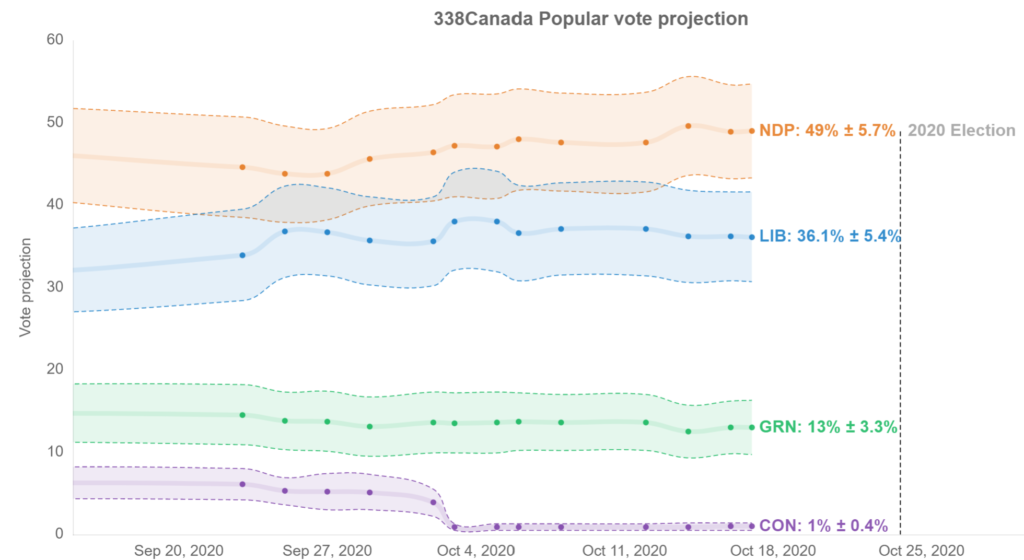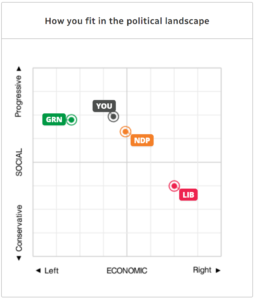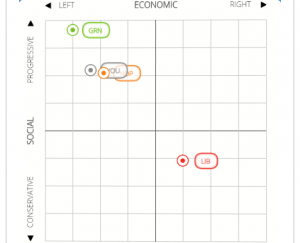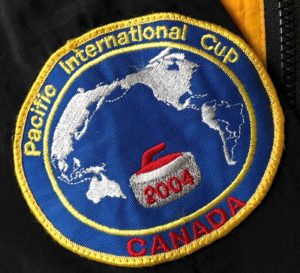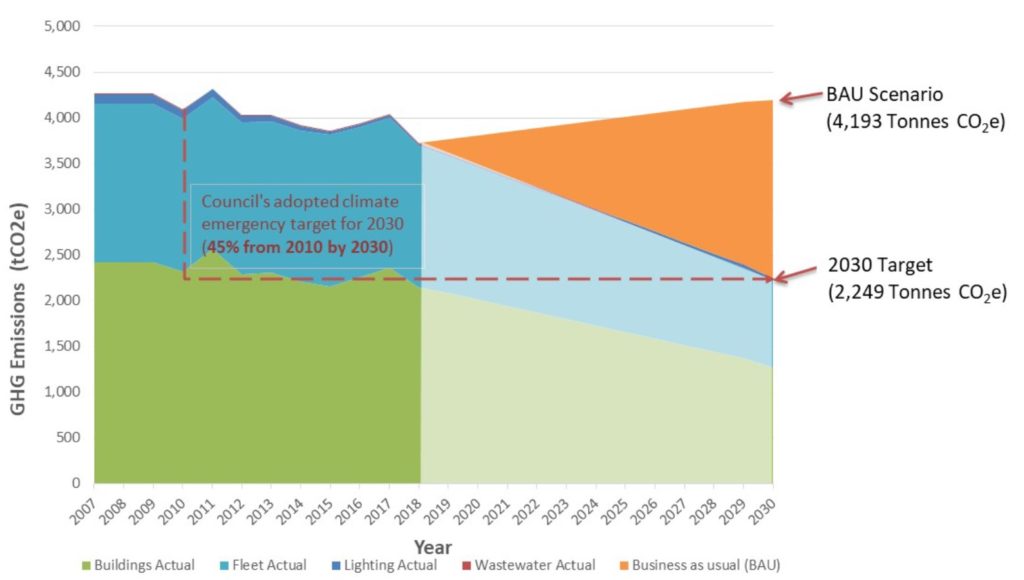Our Pre-Halloween Council meeting was not the least bit spooky, but there was some important stuff on the Agenda. We had a workshop earlier in the day to work through some topics that will be on future agendas, but this meeting started with a bit of Old Business:
MOTION: Street Naming
Councillor Das brought the following motion forward in a previous meeting, but because of some scheduling issues, we only got to it now:
BE IT RESOLVED THAT city staff bring a report to council that includes a review and update to the current naming policy, with clear direction on the name selection criteria and name selection process.
There have been at least two previous motions of a similar nature in my time on Council, one asking about updating our very, very dated street naming guidance document, another asking for a review of naming policy for all City facilities. We have not seen those reports yet, so this will hopefully prompt some quicker action.
The first thing to consider is the policy guidance we use when naming a new street, square, public space, or building, as we semi-often have to do, and it seems a little ad hoc each time. The second aspect is what to do if there is a community call the change the name of an existing City asset. It would seem a simple thing to change the name of (for example) McBride Boulevard to Woodsworth Boulevard, but what does it mean for the dozens of businesses and households that now have to change their addresses? What is the formal process for that (land title office, etc.), and what are the costs? Is there an expectation that the City compensate property owners who have been impacted? I don’t know the answer to any of those questions, and we really should before we even entertain street name modernizations.
With a few Council amendments to clarify aspects of the issue Council wanted the report to cover, it was moved unanimously.
The following items were then Moved on Consent:
Approval of Terms of Reference: Reconciliation, Social Inclusion and Engagement Task Force
Late last year, Council changed our advisory committees and Task Forces up, and have a new Reconciliation, Social Inclusion and Engagement Task Force (RSIETF). This report provides the Terms of Reference for that Task Force as proposed by the Task Force members.
Release of Resolution from Closed Meeting Related to Approval for Grant Application to the Investing in Canada Infrastructure Program – Community, Culture and Recreation Infrastructure Stream: New Westminster Aquatic and Community Hub – Active Transportation Greenways and Outdoor Play Areas
There is some stuff we talk about in closed because it involves commercially sensitive negotiations and agreements with senior governments. But if the result of these discussions result in us needing to spend money, they have to show up in the budget, so the resolution needs to be removed from Closed. In this case, we are releasing that we intend to apply for a grant for some work related to the NWACH (the weirdly-acronymic working name for the Canada Games Pool and Centennial Community Centre replacement), and we are authorizing staff to enter into a finding agreement with senior government should we be successful.
457 East Columbia Street (Arcade): Rezoning and Liquor Primary Application – Bylaws for Readings
The arcade in Sapperton wants a liquor license. It has been a somewhat difficult application because it doesn’t fit neatly into any regulatory box for either the City or the Province, and licenses like this need to fit neatly in a box or the province just won’t play and the City quickly gets itself buried in paperwork as we try to guide a business through the process. We now need to amend three separate bylaws to make it work. This was further delayed just before the COVID disruption by a change in direction by the Liquor Branch over the type of license that should apply. The arcade has been operating for a couple of years on a temporary license while they get these detail worked out, no doubt causing quite a bit of stress to the operators, as a liquor license will improve their business plan.
The project has done its community engagement (again, a provincial requirement for a new Liquor Primary license) and the three Bylaw Amendments have been drafted. Council gave the Bylaws preliminary readings, and will consider adoption on November 30th. If you have opinions, let us know.
610 Sixth Street (Royal City Centre): Grease Trap Removal and Replacement – request for Construction Noise Bylaw Exemption
Save-On Foods needs to replace a critical part of their sewer infrastructure, and it has to happen at night. They need a construction noise variance to do so.
221 Townsend Place: Heritage Revitalization Agreement – Preliminary Report
There is a house on a unique lot tucked away in Queens Park that has “significant aesthetic and scientific value” (which is a use of the word “scientific” that is laughable, but I digress) where the owner would like to subdivide the lot and insert another infill house, in exchange for HRA preservation of the existing house. Essentially, they are building a full size house similar to adjacent houses on the yard portion of the property instead of a laneway house, and are subdividing.
This is a preliminary report, and will go to further public and committee review, so let us know if you have an opinion.
805 Boyd Street (Queensborough Landing): Proposed Text Amendment to the Large Format Commercial Districts (C-10) Zone to Permit a Self-Improvement School Use – Bylaw for First and Second Readings
The Queensborough Landing big-box retail extravaganza has a few empty spots, and a Kumon Learning Centre wants to open up in one of the vacant boxes. This doesn’t strictly fit the existing zoning, so they are asking for an amendment to the zoning language to allow it. It is perhaps emblematic of the entire zoning process that they had to do a “parking analysis” to determine that they had almost a thousand extra parking spaces. Parking, it’s like a drug.
We are going to waive the public hearing here and gave the project two readings. If you have opinions, send them to us.
2019 Corporate Greenhouse Gas Emissions Update
Every year, we report on our corporate greenhouse gas emissions as part of our CARIP requirements. Our 2019 emissions were significantly less than 2018, and other than the 2017 hiccup year, we are doing a pretty good job of reducing corporate emissions – 16% below our 2010 baseline though our population and level of service has increased since then. This was on track with our previous goal, but the curve is going to have to bend much faster to get us to our 2030 target of 45% below 2010 levels by 2030. Our new CEERS will get us there.
Residential Yard Trimmings Collection and Disposal Information
It’s raking leaves season. It is important to remind residents that they should put grass, leaves, and trimmings they cannot compost on their own property or use for garden bedding into their green bin, and if they have too much for their green bin, they can put them into kraft paper bags placed next to their Green Bin. There is no limit on the number of kraft bags the City will collect for free. If you have a really large number that don’t fit easily in your regular pick-up area, contact Engineering Operations at the City, and they will arrange a special pickup for you. At no cost. Free. You can also drive your green waste to the recycling depot in Coquitlam, but why do that when we will pick them up for free?
Edit: note the above applies to single family detached only. Multi-family units that use the City’s service for green waste disposal are not, apparently, supposed to use it for yard trimmings.
User Fees and Rates Review for 2021, Amendment Bylaws for Three Readings
Here are our rates and user fees for everything from cemetery and sewer services to business licenses. Did you know we have a $76.48 charge for a business license to operate a cigarette vending machine? When is the last time you saw one of those!?
New Normal Staff Committee: 2021 Operating Budget – COVID-19 Impacts
We have a staff committee reviewing City operations and trying to plan through the next phases of the pandemic response, including a potential “return to normal”. That seems, unfortunately, still a way off, and we need to plan the 2021 budget assuming the same revenue issues that we had this year, potentially through to 2022. Even so, many operations of the City are returning, some at significantly increased cost due to pandemic safety measures, and with reduced cost recovery potential. In other words, the financial hit of COVID is still coming, and will continue for a while.
Management Oversight Committee: Westminster Pier Park – Fire Recovery Update
This is a report of the clean-up and recovery from the Pier Park fire, now that we are a month in. The clean up is complicated for a variety of environmental and jurisdictional reasons, and will be expensive. We have insurance coverage for most if not all of it, but there are a variety of details that need to be worked through both as we complete the clean up and start the planning for the post-clean up.
Right now, a significant issue is that the gate by the big W was an important emergency vehicle access to Pier Park during the dig at the Bosa site. It is hard to open the park and invite the public down there when we are not sure we can get a firetruck or ambulance onto the site if needed. We are working through some scenarios to fix that situation, so more to come.
Connaught Heights Residents’ Association Petition, 2035 London Street and 2038 Ninth Avenue, aka ‘Connaught Village Green,’
We received some correspondence from representatives of the Connaught Heights RA where they express concern that they have not been consulted about potential Affordable Housing projects in their neighbourhood. I feel the urge to reply in a similar Open Letter format to refute some of the claims being made. I want to be careful not to speak for all of Council or the City here, but in short: suggestions that we have been anything other than transparent about this process are false, and disrespectful to the staff who have worked hard and spent hours engaging with representatives of this RA. More to come.
The following items were Removed from Consent for discussion:
COVID-19 Pandemic Response – Update and Progress from the Five Task Forces
Our regular update on the task forces the City has running in City Hall addressing Pandemic response. If you want the details of how the City is addressing the evolving needs of the community as we teeter on a second wave, the details are here.
Police Motion – Workplan and Budget for Endorsement
Back in June, we had a joint meeting between the New Westminster Police Board and City Council, and a pretty long and detailed resolution was moved by both parties that encompassed a range of potential reforms for policing in New West. Some are actions that can be taken locally (primarily by the Police Board and Police department – as Council has a very limited role here), and some are more reliant on the Provincial government making reforms to the Police Act and shifting policy and funding in areas of health, addictions, and anti-poverty.
This report provides a bit of a project plan to get these various actions implemented over the next year or so. Some aspects (exploring a pilot project in New Westminster to shift how crisis health management is addressed) will be quicker, some (i.e. those that rely on the Provincial review of the Police Act) will be a bit further down the road. More to come!
2020 City Grants: Highlights and Impact
This is a reporting out on the 2020 Community Grant program. One of the big shifts Council has done this term is to move some of the politics from our granting process by moving more of the application evaluation and award selection process over to staff with less Council input. As a governance model, this makes for more transparency and equity.
The City awarded about $950,000 (combined cash and in-kind services) in grants to 73 organizations doing great work in the arts, sports, community economic development and social support. All of this in a year where many programs were disrupted by COVID, with some programs (like festivals) simply not allowed to go forward while others were strained to provide mission-critical services to vulnerable populations. On a per capita basis, New Westminster is one of the most generous cities in direct grants to organizations in the community, but we are also fortunate to have so many effective not-for-profits in the community working hard to improve the livability or our community. Our grant program is successful because of them.
2021 Budget Process – Proposed Framework
This report outlines our public engagement process for the 2021 budget. Over the last few years, we have been increasingly ramping up public participation in our budgeting process, and we have one of the most open, transparent, and participatory budgets of any City in the lower mainland. We have already started the 2021 consultations, with more than 1,000 people taking part in our budget survey and hundreds watching out budget webinar.
The survey responses were interesting, and I rush to note this was not a scientific survey of randomly selected citizens, but a self-selected survey of what we would think of a “more engaged” cohort of citizens. Still, >1,000 is a good sample size outside of a dog park survey, and the results are at times interesting.
Appreciated the work staff are doing here, and the webinar to provide some context for the survey. I did think there are some things we could explain better – we generally do a poor job differentiating between utility fees for utility operations and other services funded by taxes. If people think maintaining water and sewer infrastructure is a high priority for tax spending, they are not understanding that virtually none of their property tax goes to that. In that sense, even the term “infrastructure” is conflating and confusing – a term so broad as to be sometimes meaningless.
I also don’t think the financial constraints related to COVID have been as clearly reported as I would like. It has been a challenge, as I recognize the sand has been shifting through the summer and fall. But we have been conservative in our spending because of that uncertainty, though much of our discussion of this has been more qualitative than quantitative – we have identified places where revenues are down and where costs have changed, but we have not had a robust discussion around those number yet. That is our work in the months ahead.
It is interesting that climate action ranked fairly low in the priorities list, and I’m not sure what that means in how we roll out a program to make some pretty fundamental shifts in how we manage greenhouse gas emissions in the City. I feel like a bit of a broken record saying it, but the Climate Action we are striving towards right now will for the most part save us money in the long run, so putting it in a budget priority is tough. I think it also tells what we have all known to be true: people want to take action on climate, they just don’t want to pay for it.
The other big part of this report that separates 2021 from previous years is that we are moving many of our budget timelines up in the calendar. By getting some work done earlier, we can have the best part of a draft budget out by the end of December instead of the February-ish thing that has become our standard.
We had two items that were late On Table Additions to the Agenda:
Release of New Westminster Aquatic and Community Centre (NWACC) – Project Status Update
This is another release from closed and another ungainly acronym for the Canada Games Pool and Centennial Community Centre Replacement Project (we really need to get those figured out). The short story here is that the pause in the process for the pool replacement project has now been unpaused and we are getting our ducks in a row to go to procurement.
There is more to talk about here, and as I mentioned above, we are not out of the woods as far as COVID impacts on our operations, but at some point we need to decide to pull the trigger on the pool or go very far back on the drawing board and lose not only momentum, but much of the value we have invested in planning and design. We are also going to face some decisions about very necessary and very expensive repairs to the existing Canada Games Pool in a few years as major building and mechanical components reach end-of-life. If we don’t have a new pool ready by then, we run the risk of not having a pool for a significant period of time. So it is time for us to test the construction market in these uncertain times and get a procurement process going. Hopefully, we will be able to give a final go-ahead in January, losing only a couple of months to the COVID delay.
Diversity, Equity, Inclusion, and Anti-Racism Framework –Statement of Work
This is the report coming out of the discussion we had in the afternoon Workshop outlining the work plan for the DEIAR we are planning to implement in the City. Good stuff here, and a wide-reaching public engagement process in the community is going to be rolled out over the net month. Please join in and let us know what you think!
Finally, we had one Bylaw for Adoption:
Permissive Tax Exemption Bylaw No. 8220, 2020
The Bylaw that allows permissive property tax exemptions for a variety of non-profits and community service agencies was adopted by Council.
And that was the work for the night. See you in November, Happy Halloween. Stay safe, stay spooky.

